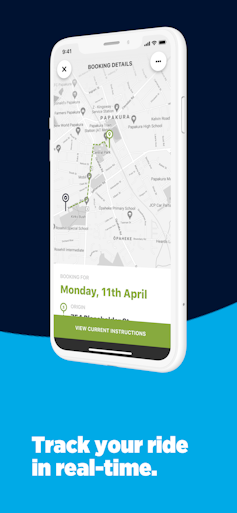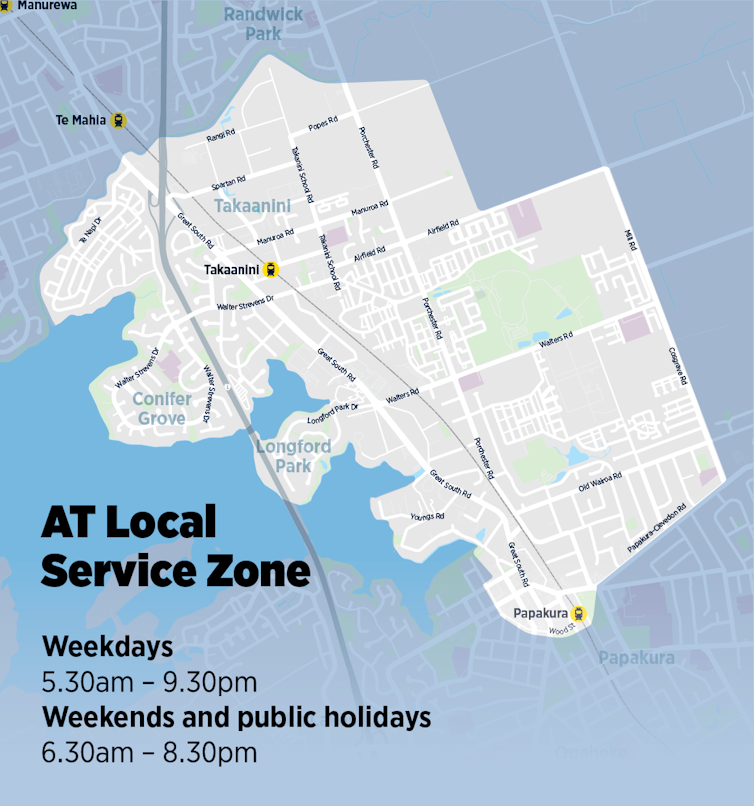Source: The Conversation (Au and NZ) – By Benjamin Kaufman, Adjunct Researcher, Cities Research Institute, Griffith University

Getty Images
Public transport systems are facing a critical challenge: how to improve services without increasing infrastructure and cost. As urban populations grow and demand increases, innovative solutions are needed to ensure the most efficient use of resources.
The answer isn’t always to buy more vehicles. One alternative is to adopt on-demand transit services. These can potentially serve more people with greater efficiency than traditional fixed-route services such as buses and trains.
As cities have grown and evolved, public transport planning has relied on these traditional systems. But because they have been designed around established routes and schedules, they have limited ability to adapt to changing demand and travel patterns.
Moreover, fixed-route systems often struggle to provide frequent coverage, especially in suburban areas and places with low population density. The so-called “first mile, last mile” problem means travellers can struggle with those sections of their journey.
This is where on-demand transit can help – by providing more direct connections between homes, workplaces and other transit hubs. It is a vital link that encourages greater uptake of public transport in general.
This shift toward dynamic, demand-responsive transport systems presents an opportunity for cities to enhance their public transit networks and better meet the needs of their residents. Optimising these services will be key to ensuring their success and was the focus of our recent work with Auckland Transport.

Author provided
Flexible transport
AT Local is Auckland Transport’s on-demand service. It was made permanent after a successful 12-month trial, replacing a low-performing diesel fixed-route service.
Using a mobile app, it operates in three suburbs of Auckland, New Zealand’s largest urban centre. Spanning an area of 16 square kilometres, the service uses four fully electric vehicles, two three-seaters and two seven-seaters.
On-demand transit systems are flexible transit systems that adjust routing to pick up and drop off passengers according to demand. Riders share journeys with other passengers going in the same direction.
It’s similar to catching a bus, but with stops and pick-up times adjusted to meet the riders’ needs. This provides a high-quality service for riders and an affordable option for transit agencies.
Since its inception in November 2021, the service has seen consistent passenger growth, even during COVID restrictions. By March this year, however, patronage plateaued due to system constraints.
Looking to increase patronage without compromising user experience (and without purchasing new vehicles), Auckland Transport asked on-demand transit technology provider Liftango to simulate various service adjustments and their impact on passenger experience.
Read more:
1 million rides and counting: on-demand services bring public transport to the suburbs
Simulation and reality
The simulations used data from completed and requested trips on one of the busiest service days. It then compared the projected performance with actual performance. Two parameters were studied: passenger boarding and alighting time, and fleet configuration.

After calibrating the simulator against reality (achieving 98.3% accuracy rate), we focused on finding potential, rapidly deployable solutions. This included reducing standard passenger boarding and alighting times within the network routing algorithms, and adding an additional three-seater vehicle to the fleet.
The results of the simulations were promising. The most successful adjustment, which involved both allocating revised boarding and alighting times in the routing algorithm and the addition of a vehicle, resulted in an 18.97% increase in patronage.
Adjusting boarding and alighting time alone led to a 15.52% increase – meaning customer value increased without the need to buy another vehicle. On this basis, Auckland Transport decided to adjust the boarding and alighting time used in the computer programme that allocates routing and passengers to vehicles.
This doesn’t mean riders are forced to board more quickly, merely that the algorithms have been fine tuned, guided by actual boarding and alighting times. But it has a significant impact on routing when applied to hundreds of trips each week.
Read more:
How on-demand buses can transform travel and daily life for people with disabilities
Optimisation and service
The benefits have been significant. Maximum daily patronage has grown since the change, with a 14% increase compared to the historical maximum. Passengers per vehicle-hour increased by 15% compared to the period before the change. New maximum weekly passenger levels have been reached.
The optimisation work has helped Auckland Transport serve more passengers without increasing fleet size or journey times, according to senior transport planner James Hills. “This has added resilience to the service and enabled us to make the most of what we have.”
The case of AT Local highlights the value of using simulations to optimise on-demand services. By using data from active services and adjusting service parameters in a simulation, service providers can make evidence-based decisions about service design.

Efficiency and accessibility
Optimising on-demand transit routing algorithms can have several benefits for public transport systems.
-
It can significantly increase overall efficiency, reducing fuel (or electricity) consumption and wear-and-tear on vehicles, leading to reduced operating costs. This makes on-demand systems scalable and adaptable, able to accommodate new infrastructure developments and react to major disruptions such as extreme weather or driver shortages.
-
By taking into account individual pick-up and drop-off times and locations, on-demand systems can offer more direct routes to minimise waiting times and transfers. This approach can lead to higher customer satisfaction, increased patronage, and greater support for public transport.
-
Optimised on-demand systems can improve accessibility and coverage in under-served areas. This promotes social equity and ensures a greater number of people have reliable transport options. Such systems can be tailored for people with restricted mobility: on-demand vehicles can be programmed to pick up some passengers directly from their homes, and by designating “virtual bus stops” for others.
Using simulations to guide evidence-based decisions allows for smart utilisation of existing assets. In turn, this leads to improved user experiences and increased patronage while maintaining a high quality of service for diverse passenger needs.
The author thanks Iain MacDougall and James Willcox from Liftango Labs for their assistance in this research, and Auckland Transport for making this research possible.
![]()
Benjamin Kaufman works for Liftango as a New Mobilities Specialist
– ref. Smart moves: how Auckland can get more for its money from on-demand public transport – https://theconversation.com/smart-moves-how-auckland-can-get-more-for-its-money-from-on-demand-public-transport-205389






